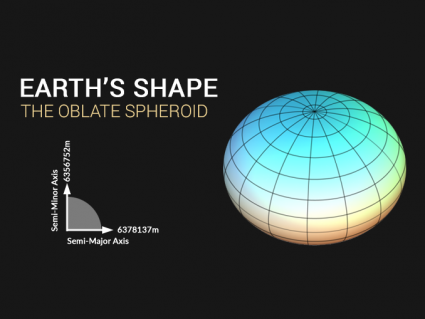Shape of the Earth: The Oblate Spheroid
Earth is not a perfect sphere. In fact, it’s in the shape of an oblate spheroid. Earth shape bulges at the equator and flattens at the north and south pole.

Earth is not a perfect sphere. In fact, it’s in the shape of an oblate spheroid. Earth shape bulges at the equator and flattens at the north and south pole.

Earth spins on its axis of rotation. But it doesn’t spin perfectly. Like a toy top, it wobbles when it spins. This displacement is the Chandler Wobble.

The escape velocity of Earth (11.186 km/s) is the speed at which a free object must travel to escape into space from the planet’s gravitational pull.

Because the Earth is tilted on its axis, it’s why we have seasons. When Earth receives more sunlight on one side, it’s summer. And vice versa for winter.

Alpha Centauri (Rigil Kentaurus) is the closest star system away from our sun. It’s about 4.3 light years (or 25 trillion miles) away from Earth.

Comets are balls of frozen gases mixed with pieces of rocks, water and ice. There are only a hundred or so named comets and a bit over 3500 known comets.

At all times the sun illuminates half of the moon. Depending on your point of view, this is what causes the various phases of the moon.

The moon is approximately 238,855 miles (384,400 km) away from the Earth. It’s such a big gap that you can almost fit all the 7 other planets in between.

As the Earth spins, the sun always shines on one side which gives it sunlight. When you’re facing the sun, it’s daytime. But when you’re not, it’s night.

In terms of space exploration, Mars has been the greatest frontier for discovery. From its red color to marsquakes, here are 15 remarkable facts about Mars.